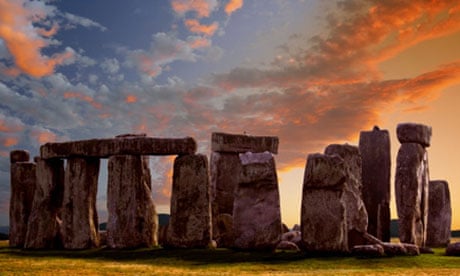It already attracts more than a million visitors a year. Yet these numbers could be dwarfed once Stonehenge, one of the world's greatest prehistoric monuments, completes its radical facelift.
Over the next year, the nearby A344 will be closed and grassed over. A new visitor centre will be built a mile and a half from the monument and tourists will be encouraged to explore the ancient landscape around the 5,000-year-old complex.
The makeover falls short of plans, since scrapped, that would have seen all major thoroughfares in the area diverted through tunnels. Nevertheless Stonehenge should be returned to something like its past glory, it is hoped, and then attract even greater numbers of visitors seeking to understand the purpose of this vast, enigmatic edifice.
For centuries, historians and archaeologists have speculated about the reason for the monument's construction. Suggestions have ranged from the proposal that it was built by Merlin to commemorate knights slain in a battle against Saxon invaders to the idea that Stonehenge was a highly sophisticated astronomical observatory.
Earlier this month, the latest salvo in the debate was fired by archaeologists, led by Professor Michael Parker Pearson, of University College London, who published research indicating that the original Stonehenge was a graveyard for a community of elite families. "This was a place for the dead," Parker Pearson said.
The notion – that Stonehenge is essentially a large funerary temple created between 3000 and 2500BC – does not find favour with every scientist, however. Indeed, the other main group of UK researchers investigating the site – archaeologists led by Professor Tim Darvill of Bournemouth University – believe the place was an ancient Lourdes. The sick and wounded would come here for cures from the monument's great bluestones, which had been dragged from Wales to Wiltshire because of their magical healing properties. "This was a place for the living," Darvill said.
Such divergence of views would seem to suggest we are as far from understanding the purpose of Stonehenge as we have ever been. English Heritage historian Susan Greaney counselled caution, however. We should not place too much emphasis on our ignorance about the monument, she said. "We know who built it and when they built it and have a good idea how they built it. It is only its ultimate purpose that still remains unresolved," she said.
Detailed radiocarbon dating of Stonehenge has shown that work on its construction probably began with the huge circular ditch that still surrounds the monument. Inside several dozen bluestones were erected along with various timber posts and other structures. It was a relatively modest construction by the standards of the remains we can see today. Then, around 2600BC, the site was transformed. A ring of giant upright stones called sarsens were erected and capped with huge rock lintels. Inside five huge trilithons – pairs of rock columns capped with a single slab – were erected and many of the magical bluestones from Wales that had been erected near the edge of the monument were moved inside this inner sanctum. Crucially, the rays of the setting midwinter sun and the rising midsummer sun would shine through the heart of the monument and down the avenue that leads into it.
Over succeeding centuries, the bluestones were rearranged for purposes that still mystify scientists. In short, Stonehenge is not one monument, built at one moment in history, but many built and rebuilt over many centuries. By that definition, it had no single purpose but had many. Even today it performs many functions – as a tourist attraction, a religious site (for Druids), and a place for scientific study, for example.
As to the identity of the builders of Stonehenge's great rings of sarsens and trilithons, that appears to be far less of a mystery. Work at the nearby site of Durrington Walls indicates it was occupied by thousands of individuals at exactly the time the great stone rings of Stonehenge were being erected. The remains of the cattle they slaughtered have been studied and by careful analysis of the chemical makeup of their teeth, their place of origin in Britain has been determined. Remarkably, the animals appear to have been brought to Wiltshire from almost every part of the country. Even more intriguingly, most were killed during two peak periods: midwinter and midsummer.
"People were coming from all over the country at these times," said Parker Pearson. "It was partly a religious festival and partly a construction site: a combination of Glastonbury and a motorway building camp. The crucial point is that this was the first and only time in British prehistory that the country was united in a common cultural activity."
The issue is: what was that common cultural activity? Parker Pearson believes Stonehenge was erected as a monument to the ancestors of all Britons. The aim was to unify the different peoples of the British Isles by honouring all their dead. Stones were taken from west and east and erected together to solidify alliances that had been struck up between these different people. "Stone is eternal and was used to represent the dead," said Parker Pearson. "That is the purpose of Stonehenge.
Darvill does not agree. "I think that very early on Stonehenge was a burial ground but after 2600BC these burials stop. So how can this be a place of the dead?" By contrast, Darvill points to the quarries in the Preseli Hills in Wales, the source of Stonehenge's bluestones. "These are all associated with sacred springs today," he said.
"That association is a very ancient one. These stones were brought to Stonehenge because they were thought to have healing properties. That is why all that effort went into its construction. It was a place where people thought their illnesses might be cured and their lives saved."

Comments (…)
Sign in or create your Guardian account to join the discussion